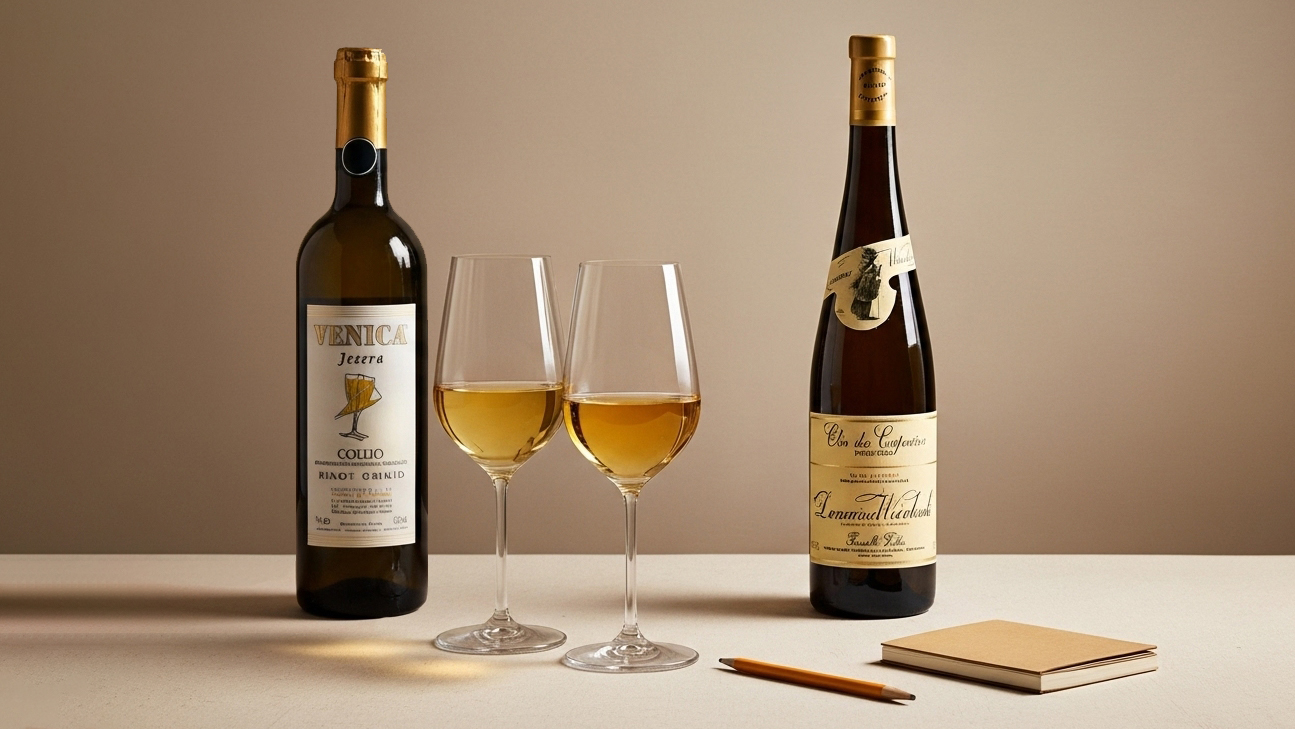
The Hidden Language of Taste
Most people try to learn wine by memorizing words.
Green apple. Lemon zest. Wet stone.
You’ve probably seen tasting charts filled with terms like these — and maybe even tried to remember them. But here’s the truth: great tasters don’t memorize. They notice.
They see patterns that connect one wine to another. The more you pay attention to what wines have in common — and how they differ — the faster your palate learns to speak its own quiet language.
This issue is about shifting your focus from words to recognition. You’ll see why noticing relationships between wines builds deeper understanding than memorizing any list of flavors ever could.
What you’ll learn today
- Why noticing relationships between wines sharpens your palate faster than memorization
- How your brain naturally builds its own tasting vocabulary
- A side-by-side exercise to help you “hear” the language of taste
1. Taste isn’t about labels — it’s about recognition
When you taste a wine, your brain is searching for familiarity. It wants to match what you’re sensing to something you’ve experienced before. That’s why your first impressions matter more than your vocabulary.
If you pay attention, you’ll start to see connections everywhere. Sauvignon Blanc and Grüner Veltliner share that same crisp, green edge — but one leans herbal, the other peppery. Pinot Noir from Oregon and Burgundy both carry red fruit, yet one feels rounder, the other leaner.
You don’t need to name every aroma; you just need to notice how it relates to something you’ve tasted before.
As you collect these small observations, you start to think in patterns instead of isolated facts. That’s when wine starts making sense.
2. How patterns create your real wine vocabulary
The more you recognize a pattern, the easier it becomes to describe it. You might not have known the word minerality the first time you felt it — that chalky, stony texture — but after a few Chablis or Albariño, your brain connects the dots.
Your wine vocabulary builds itself from repetition. You see, smell, and feel things again and again until they form a mental shortcut.
The language comes naturally — not because you memorized it, but because you’ve lived it.
You start predicting what’s next: “This smells like that Riesling I had last month.” “This feels softer than the last Cabernet.” Those links are what make tasting faster, easier, and more intuitive.
3. Why side-by-side tasting teaches faster
Comparing wines is like putting subtitles on a foreign film — suddenly everything becomes clear.
When you taste two wines side by side, your senses sharpen. The contrast shows you what acidity feels like, what ripeness does to texture, and how alcohol changes weight. It’s not about which one you like more; it’s about what each one teaches you about the other.
Charts can tell you what to look for, but comparison makes you feel it. Once you sense a pattern directly — lighter, darker, sharper, smoother — you don’t forget it.
Dive deeper into how comparative tasting unlocks your palate here.
4. When words help — and when they don’t
Descriptors aren’t the enemy. They’re helpful once you’ve experienced something enough to recognize it. But when you chase perfect words too early, they can distract you from what you actually feel.
It’s better to be roughly right about a sensation than perfectly wrong about a term.
Let your instincts lead first. The words will catch up.
5. Reflection — learning to read what your palate is saying
Every sip teaches you something, even if you can’t name it yet.
This is the hidden language of taste.
The more wines you compare, the clearer the patterns become — and the less you need to overthink.
It’s not stored in flashcards or study sheets. It lives in the quiet moments when something familiar clicks.
So next time you pour a glass, skip the flavor wheel. Ask instead: What does this remind me of? What’s different from last time?
You’ll be surprised how fluent your palate already is.


